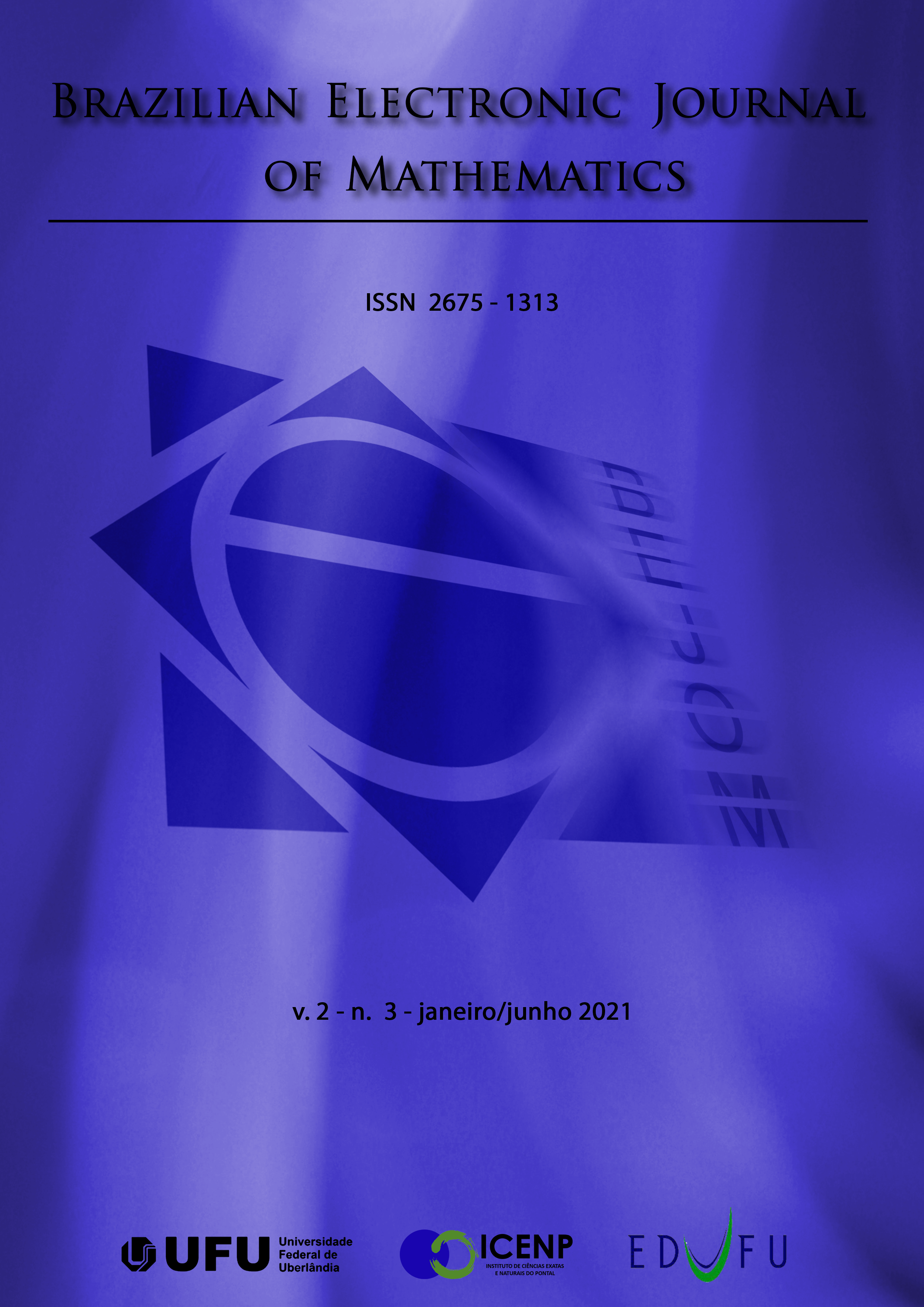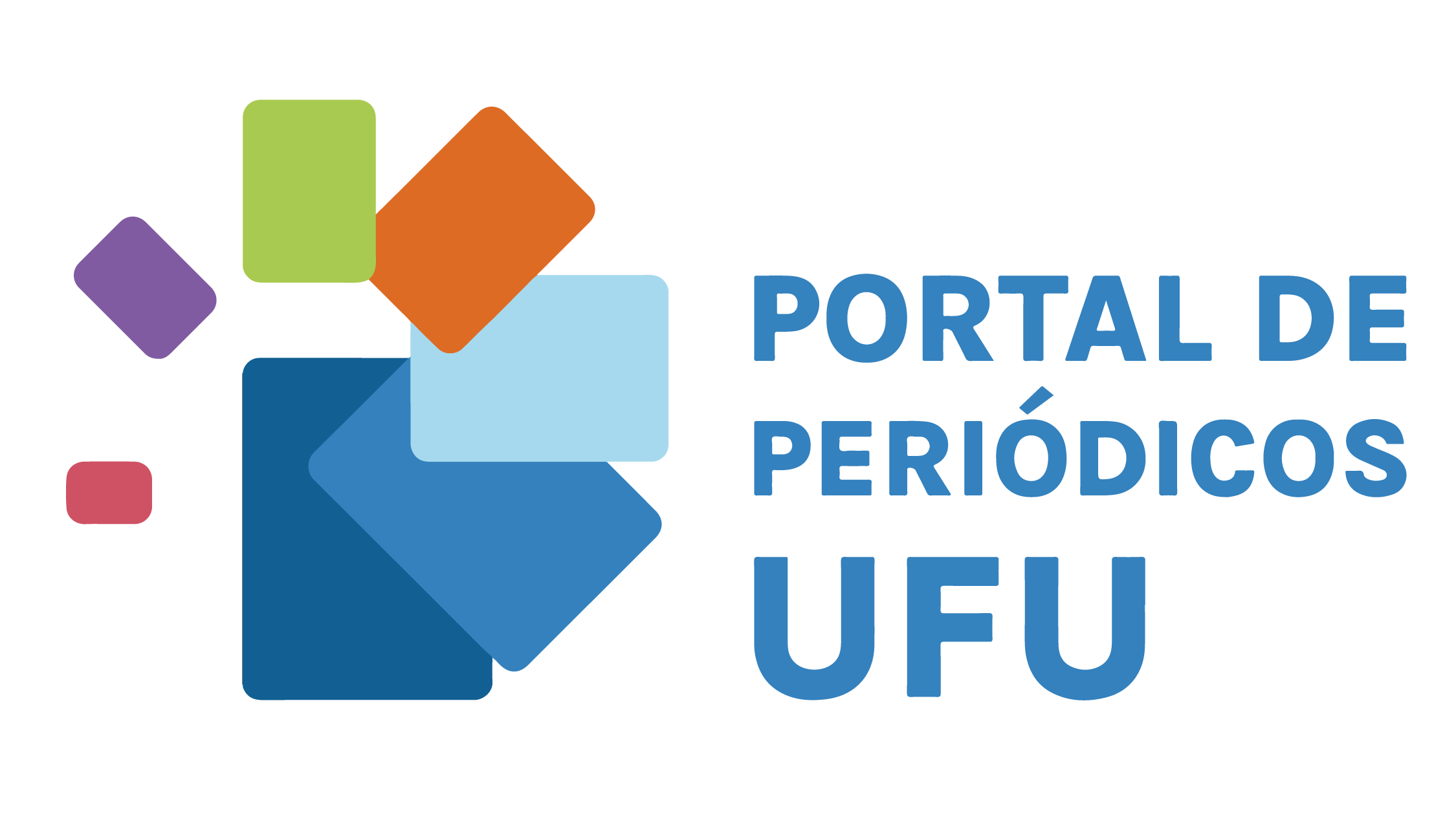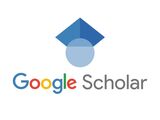Um estudo sobre a resolução de problemas com alunos surdos
DOI:
https://doi.org/10.14393/BEJOM-v2-n3-2021-55642Palavras-chave:
Resolução de problemas. Libras. Interpretação de problemas. Educação Matemática inclusiva.Resumo
Este trabalho analisou que elementos se revelam durante a resolução de problemasem formato vídeo gravado para Libras e em Língua Portuguesa escrita por alunos surdos.O caminho escolhido para o desenvolvimento deste trabalho tem caráter qualitativo e ex-ploratório com estudo de caso, que permitiu investigar as contribuições possibilitadas pelouso da Língua Brasileira de Sinais na Resolução de Problemase compreender as principaisdificuldades de alunos surdos em atividades de Resolução de Problemas sem o uso da Li-bras. A coleta de dados ocorreu por meio de entrevista semiestruturada com 3 (três) alunos,do 9oano, de uma escola que atende exclusivamente surdos da região norte do Paraná etambém por meio da aplicação de uma prova com problemas matemáticos para os mesmosparticipantes. A última se deu em duas fases: na primeira, o aluno recebeu a prova em Lín-gua Portuguesa e, na segunda, em Libras, cujo o objetivo foi descobrir as contribuições daLíngua Brasileira de Sinais na interpretação de problemas matemáticos por alunos surdos.Os resultados apresentados indicaram que é irrelevante o problema ser proposto em LínguaPortuguesa ou em Libras, pois os participantes apresentaram dificuldades na interpreta-ção matemática do problema, bem como no conteúdo matemáticorelacionado. Portanto,mostrou-se necessário um ensino de Matemática adequado aossurdos e com abordagensmetodológicas diferenciadas e próprias a esse público.
Downloads
Referências
ALMEIDA, M. F. O. A importância da comunicação em LIBRAS na vidadas pessoas surdas. In: Portal Educação. Disponível em: https://www.portaleducacao.com.br/educacao/artigos/22074/a-importancia-da-comunicacao-em-Libras-na-vida-das-pessoas-surdas. Acesso em 26 set. 2016.
BOGDAN, R. C.; BIKLEN, S. K. Investigação qualitativa em educação: uma introdução à teoria e aos métodos. Portugal: Porto, 1994.
BORGES, F. A; NOGUEIRA, C. M. I. Um panorama da inclusão deestudantes surdos nas aulas de matemática. In: NOGUEIRA, C. M. I. (ORG.). Surdez, Inclusão e Matemática. Curitiba: CRV, p. 43-70, 2013.
BRASIL. Ministério da Educação. Secretaria de Educação Fundamental. Parâmetros Curriculares Nacionais: Matemática. (3o e 4o ciclos do ensino fundamental). Brasília: MEC, 1998. Disponível em http://cptstatic.s3.amazonaws.com/pdf/cpt/pcn/volume-03-matematica.pdf
BRITO, L. F. A Língua Brasileira de Sinais. 1998, 64p. Disponível em: https://www.librasgerais.com.br/materiais-inclusivos/downloads/gramatica-libras.pdf. Acesso em: 30 jan 2019.
LUPINACCI, M. L. V. e BOTIN, M. L. M. Resolução de problemas no ensino de matemática. In: ANAIS DO VIII ENCONTRO NACIONAL DE EDUCAÇÂO MATEMÀTICA, Recife, 2004. p. 1-5. Disponível em :http://www.sbembrasil.org.br/files/viii/pdf/02/MC18361331034.pdf.
MOURA, M. C. Surdez e linguagem. In: LACERDA, C. B. F; SANTOS, L. F. (ORG.). Tenho um aluno surdo, e agora?Introdução à LIBRAS e educação desurdos. São Carlos: EdUFSCar, p. 13-26, 2014.
NETO, M. O. T. Os significados produzidos por estudantes durante a resolução de problemas em Matemática. Disponível em: http://www.sbem.com.br/files/ix_enem/Comunicacao_Cientifica/Trabalhos/CC15493997215T.rtf. Acesso em: 29 mai 2018.
NOGUEIRA, C. M. I; ZANQUETA, M. E. M. T. Surdez, Bilinguismo e o EnsinoTradicional da Matemática. In: NOGUEIRA, C. M. I (ORG.). Surdez, Inclusão e Matemática. Curitiba: CRV, p. 23-41, 2013.
POLYA, G. A arte de resolver problemas. Tradução de Heitor Lisboa de Araújo. Rio de Janeiro: Editora Interciência, 2006.
ROCHA, L. R. M. O que dizem surdos e gestores sobre vestibulares em Libraspara ingresso em Universidades Federais. 2015. 127 f. Dissertação (Programa de Pós-Graduação em Educação Especial), Universidade Federal de São Carlos. SãoCarlos: UFSCar, 2015. p.125.
SILVA, J. A. F. Refletindo sobre as dificuldades de aprendizagem na Matemática: algumas considerações. Dissertação (Trabalho de Conclusão de Curso) - Universidade Católica de Brasília, Brasília, 2005. 11p. Disponível em: https://www.ucb.br/sites/100/103/TCC/22005/JoseAugustoFlorentinodaSilva.pdf.
Downloads
Publicado
Edição
Seção
Licença
Copyright (c) 2020 BRAZILIAN ELECTRONIC JOURNAL OF MATHEMATICS

Este trabalho está licenciado sob uma licença Creative Commons Attribution-NonCommercial 4.0 International License.
- Os artigos publicados a partir de 2025 são licenciados sob a versão CCBY-4.0. Ao enviar o material para publicação, os autores estarão automaticamente, concordando com as diretrizes editoriais do periódico e assumindo que o texto foi devidamente revisado. A submissão simultânea de artigos a outras revistas é proibida, e, é também proibida a tradução de artigos publicados no periódico para outro idioma sem a devida autorização.
- Os artigos publicados em anos anteriores a 2025 são licenciados sob a versão CC BY-NC 4.0.









